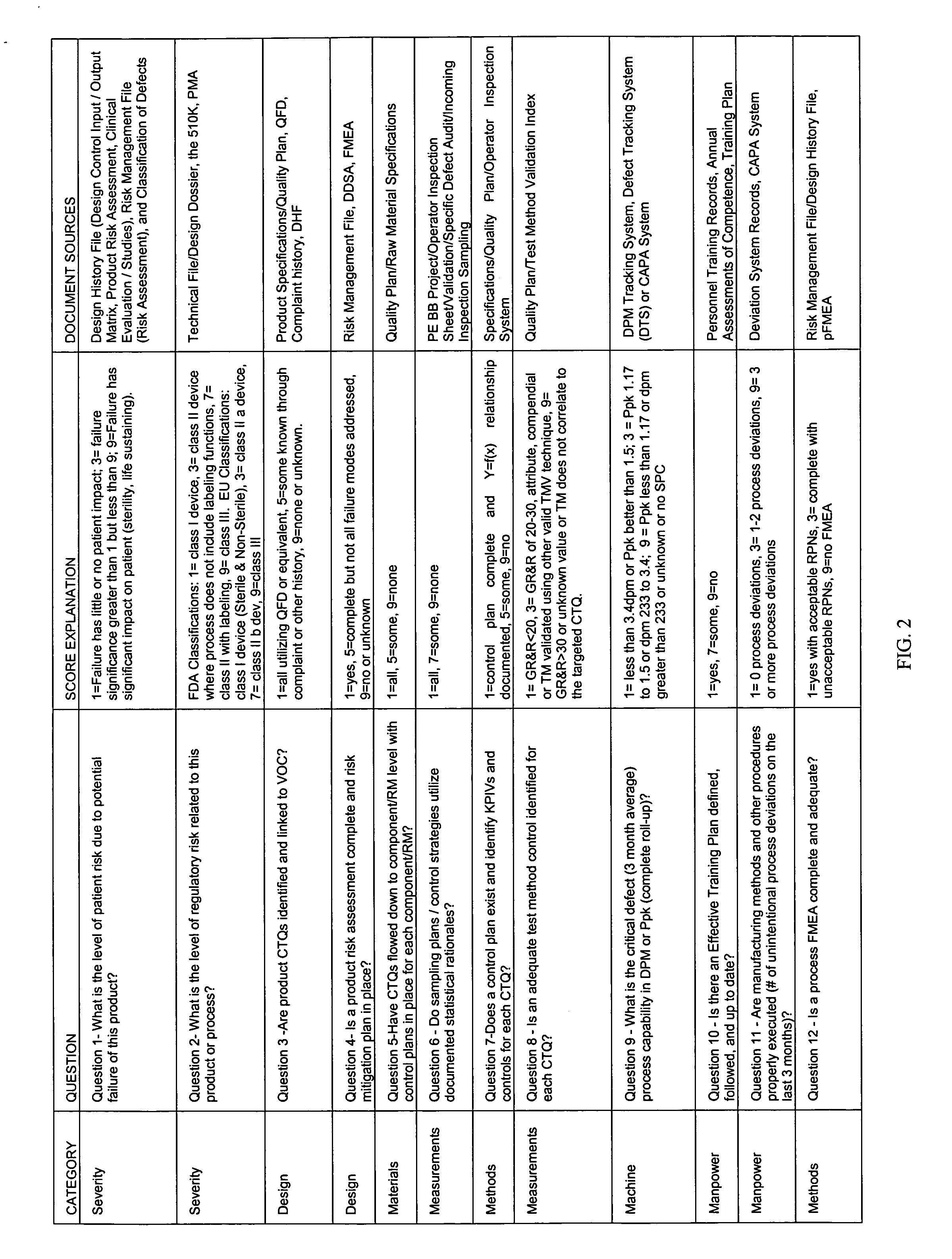Predictive indicator model
- Summary
- Abstract
- Description
- Claims
- Application Information
AI Technical Summary
Benefits of technology
Problems solved by technology
Method used
Image
Examples
Embodiment Construction
[0029] The Predictive Indicator Tool (PI Tool) method of the present invention, is a novel method of predicting areas in manufacturing processes with a higher risk of potential non-conformances based upon answering and scoring questions related to product design, regulatory risk, and the manufacturing process variables associated with the products produced in the process.
[0030] The method facilitates a more predictive process than GMPs and statistical control systems of identifying potential risks, thus providing a means to identify and prioritize quality improvement efforts and preventive actions. The purpose of the novel method of the present invention is to identify through scoring processes the potential risk, based upon answering questions related to the product's design, regulatory risk and associated performance of the manufacturing process that produced the product. In this method, the scores are then used to prioritize quality improvement efforts.
[0031] The predictive ind...
PUM
 Login to View More
Login to View More Abstract
Description
Claims
Application Information
 Login to View More
Login to View More - R&D
- Intellectual Property
- Life Sciences
- Materials
- Tech Scout
- Unparalleled Data Quality
- Higher Quality Content
- 60% Fewer Hallucinations
Browse by: Latest US Patents, China's latest patents, Technical Efficacy Thesaurus, Application Domain, Technology Topic, Popular Technical Reports.
© 2025 PatSnap. All rights reserved.Legal|Privacy policy|Modern Slavery Act Transparency Statement|Sitemap|About US| Contact US: help@patsnap.com


